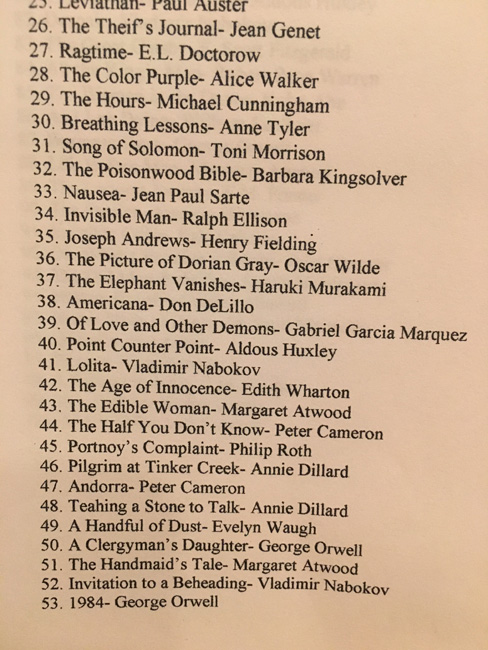Something unsettled me amidst reading Rachel Kushner’s novel “The Mars Room” which focuses primarily on a young mother named Romy Hall who has just been convicted for two life sentences. We’re given a highly detailed and unflinching look into the lives of an array of individuals who have been incarcerated in a California state prison for women. Scenes veer from instances of horrific violence and suffocating devastation to humorous depictions of the women’s characters and interactions. This tragicomic balance is no doubt both true to life and necessary for a novel’s structure, but it felt somewhat voyeuristic in a way that made me uncomfortable.
That there is a whole population of people locked away from public view and the justice system is fraught with problems is something that shouldn’t be ignored. I believe fiction can be a means by which we can better empathize and understand the lives of people who were born into and are trapped in circumstances radically different from our own. And I have no doubt about the sincerity or meticulousness of Kushner’s labour in creating a novel that sympathetically represents people whose voices are too often ignored or suppressed. But I felt there was something awkward about the way she’s rendered these lives with such artistic control by also incorporating different third person narrative strands about a few male characters. While it didn’t stop me from being emotionally engaged at points or admiring many of the insights “The Mars Room” gives, it left me somewhat estranged from what I felt the core of this novel was trying to do.
Kushner has spoken in interviews about her proximity to correctional facilities such as this, friends who are serving long prison sentences and how Romy’s background is similar to girls she knew in her own childhood. There’s a potent logic in how we follow Romy’s journey from first being processed into permanent incarceration where she reflects about large swaths of her coming of age in a side of San Francisco much different from the popular understanding of that city in the 70s and 80s. This is a place of gritty urban decay, poor education and violence that almost inevitably leads Romy into a life of drug addiction and working at a strip club. However, interspersed with her memories and present experiences in prison are accounts of a dirty ex-cop named Doc and a Thoreau-loving man named Gordon who encourages inmates to get their GEDs while occasionally getting too touchy feely. These sections didn’t make much of an impression on me other than making grand statements that Kushner couldn’t give in the confines of Romy’s tale and serving as devices to feed into the plot working towards the novel’s somewhat melodramatic conclusion.
The content and musings within these third person accounts about men are sometimes interesting but jar against the larger narrative about Romy and other female inmates. For instance, at one point Gordon muses how “A man could say every day that he wanted to change his life, was going to change it, and every day the lament became merely a part of the life he was already living, so that the desire for change was in fact a kind of stasis that allowed the unchanged life to continue, because at least the man knew to disapprove of it, which reassured him not all was lost.” The devastating logic of this is really meaningful and speaks to universal ideas about human nature. Nevertheless, it felt too often like Kushner was striving to faithfully balance the lives of men against the female population of the prison. The only instance where it felt really effective was towards the end in how she rendered the misogynistic thought process and self-justification of a male stalker. But overall the balance Kushner tried to strike faithfully depicting all her characters’ stories felt unwieldy to me.
Romy recalls going to a museum and sees Henri Matisse’s painting ‘The Girl with Green Eyes’ which she feels connected to.
I gravitated towards Romy’s voice the most and wanted to stay with it. There are many punchy short lines which brutally convey the way a prison environment leads to paranoia and isolation: “You can’t believe anything people say. But what they say is all you have.” Kushner also has a skilled way of emotionally drawing you into this character’s experience and then stating how you are still really different. At one point Romy observes “A lot of history is not known. A lot of worlds have existed that you can’t look up online or in any book, even as you think you have the freedom to find things out that I cannot, since I don’t have access to the internet.” I admire the way she makes a large statement about the hidden aspects of history and then reminds the reader how Romy is excluded from trying to research information in the way we’re now accustomed to because she can’t search for things online. The way in which the reader is drawn into relating to Romy’s human experience but is also made aware of the significant differences in terms of opportunities and freedom is really powerful. I just wish Kushner had stayed true to that rather than striving to create a panoramic view of society like in a Dostoevsky book who she heavily nods towards in this novel.
For a different look at the lives and mentality of people in prison, I’d really recommend reading the anthology “Prison Noir” which is a collection of powerful stories written by people who are in prison or have been incarcerated.





































